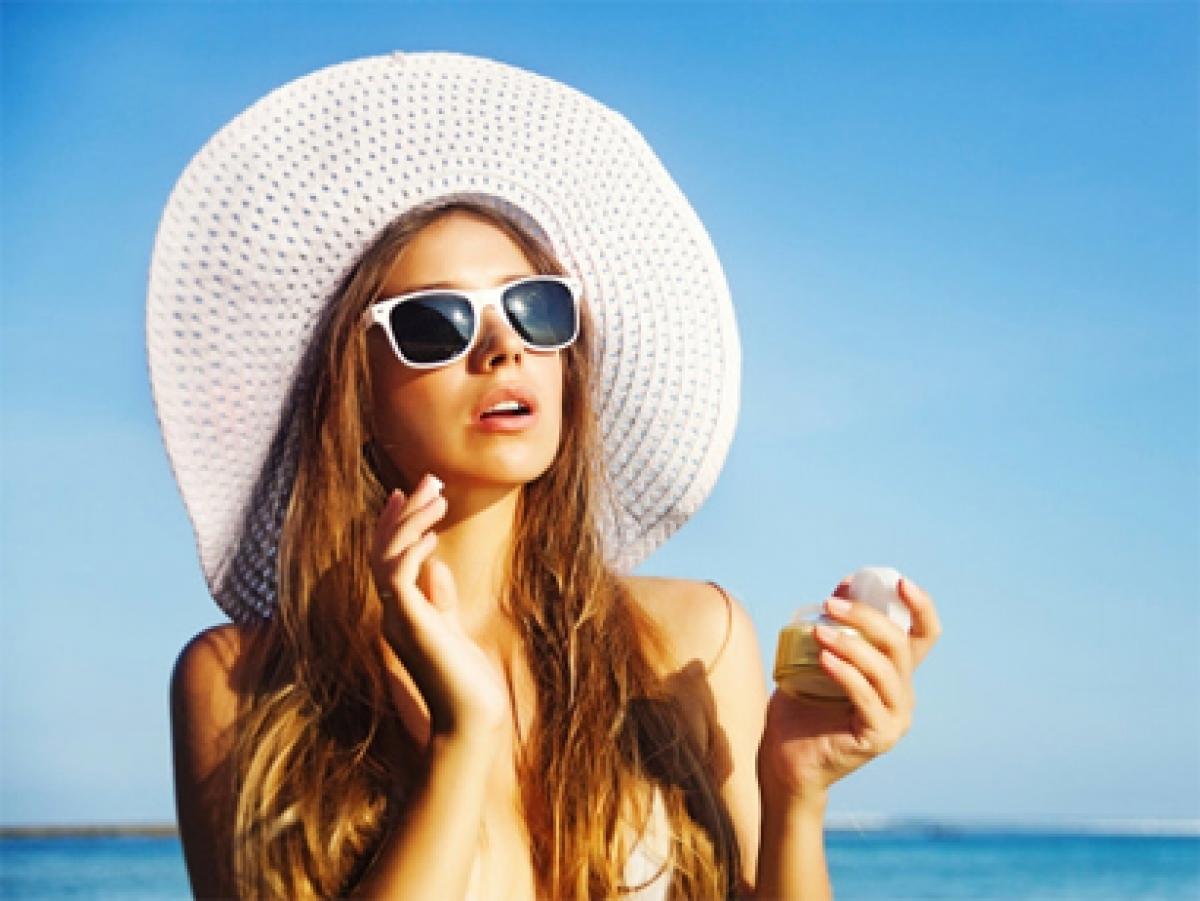Live
- Student wings urge govt to postpone Group-II exams
- TGPSC approves list of provisionally selected jr lecturers
- We are not focussing just on Bumrah or Kohli: Lyon
- Environment experts root for medicinal plants to fight air pollution in Hyderabad
- Harmanpreet backs sidelined Shafali
- Sensational Suryavanshi
- Who is next BCCI secretary?
- Will encourage MLA sports meets says Yogi Adityanath
- NRSC flags cotton seed ryots’ plight
- Top Smartphone trends of 2024 that redefined technology
Just In

As summer approaches, exposure to the sun can lead to suntan, sunburn and many other effects. Apart from tanning, the skin is also exposed to harmful ultraviolet rays of the sun, which has several long-term effects, like early formation of lines and wrinkles on the skin. Sun exposure can also lead to dark spots or patches. There are remedies at hand.
As summer approaches, exposure to the sun can lead to suntan, sunburn and many other effects. Apart from tanning, the skin is also exposed to harmful ultraviolet rays of the sun, which has several long-term effects, like early formation of lines and wrinkles on the skin. Sun exposure can also lead to dark spots or patches. There are remedies at hand.
The skin must be protected with a broad-spectrum sunscreen, which provides protection from both UV-A and UV-B rays of the sun. What are UV rays? The sun gives off ultraviolet rays. We divide them into categories based on the wavelength. There are UV-A, UV-B and UV-C rays.
Of these, UV-C rays are almost completely absorbed by the ozone layer and do not affect the skin. UV-B affects the outer layer of skin and is mainly responsible for sunburns. It is the most intense between 10 a.m. and 2 p.m. when the sunlight is brightest. UV-A rays were once thought to have a minor effect on skin damage. But now, studies show that UV-A is a major contributor to skin damage and signs of premature ageing.
Sun exposure can also cause loss of moisture from the skin. However, most sunscreens have built-in moisturisers. So, it is not necessary to apply both moisturiser and sunscreen, unless the skin is very dry.
So what is the remedy? At the moment, physical protection is the answer. This can be done by applying a broad-spectrum sunscreen. A sunscreen is a product which forms a protective cover between the skin and the sun's rays, while a broad-spectrum sunscreen is one which provides protection from both UV-A and UV-B rays of the sun.
It is essential to apply sunscreen, not only on the face, but also on all exposed areas. The back of the neck and arms are extremely vulnerable to sun damage too. The sunscreen should be applied about 20 minutes before sun exposure. If you happen to be in the sun for more than an hour, you should reapply the sunscreen.
A sunscreen with SPF 15-20 is adequate for most skins. But if the skin is more sensitive and tends to burn easily, one should use a sunscreen with a higher SPF of 30-40. Avoid rubbing the sunscreen into the skin. It is better to pat it on.
Also remember to apply sunscreen while swimming, holidaying by the sea or in the hills. Reflective surfaces, like water and snow actually increase the effects of UV rays.
For oily skin, look for an "oil-free" product, or apply a sunscreen lotion, rather than a sunscreen cream. Add a drop of water to it, to provide a lighter coverage. If the skin is very dry, apply a sunscreen cream. Or, you can apply a moisturising cream first. Wait for a few minutes and then apply the sunscreen.
By Shahnaz Husain
(Shahnaz Husain is a well-known beauty expert, specialising in herbal remedies. The views expressed are personal)

© 2024 Hyderabad Media House Limited/The Hans India. All rights reserved. Powered by hocalwire.com







